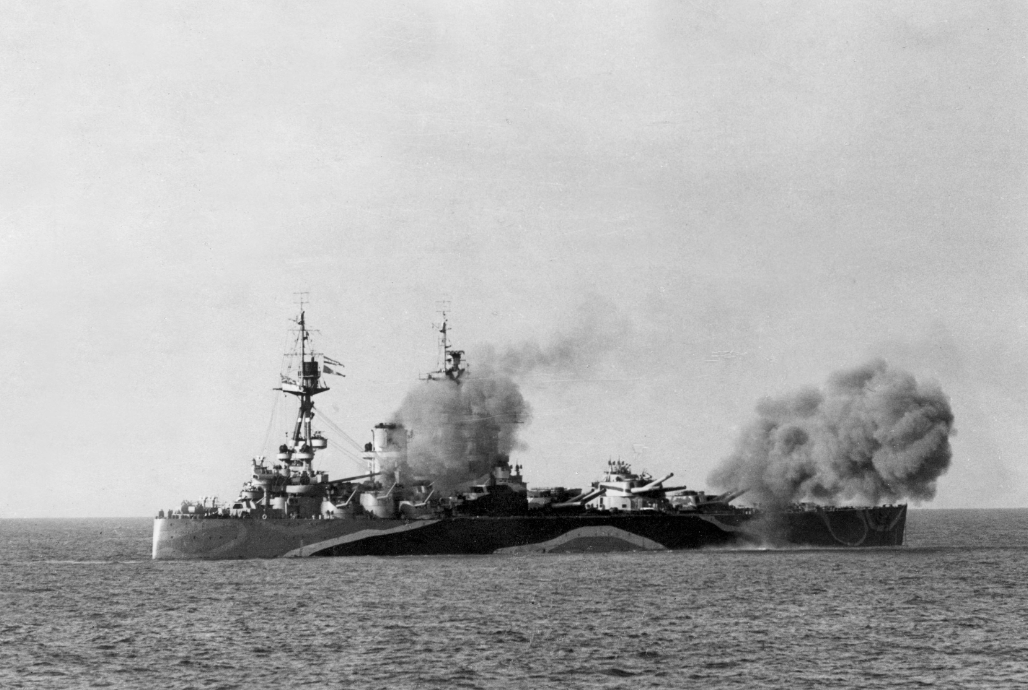
The Bismarck’s tale is one of dreams, advanced technology, and the harsh conditions of contemporary naval warfare. Christened in February 1939, the German battleship was a gargantuan icon of sea power—a floating citadel built to overwhelm the Atlantic and shatter Allied supply routes. Weighing more than 50,000 tons when laden, measuring 251 meters, and equipped with eight massive 15-inch guns, the Bismarck represented Nazi Germany’s oceanic ambitions and specifically countered Britain’s dominance of the seas.

Bismarck was no coincidence; she was a declaration. Constructed by Blohm & Voss in Hamburg, her armor was the thickest ever to be used on a battleship, comprising a 320mm belt and turret plates up to 360mm thick. Though of enormous size, she could sustain speeds in excess of 30 knots, ample enough to outrun many of her enemies. She and her sister ship, Tirpitz, were designed to pursue Allied convoys and compel the Royal Navy to break up their forces across the expanse of the Atlantic.

Bismarck’s sole combat mission, Operation Rheinübung, commenced on May 19, 1941. With Commodore Admiral Günther Lütjens and Captain Ernst Lindemann commanding, the battleship sailed from Gotenhafen with the heavy cruiser Prinz Eugen. The aim was to break into the Atlantic, sink commercial ships, and lure British warships away from the main convoy routes. Grand Admiral Erich Raeder was optimistic that the bold raid would turn the Battle of the Atlantic in Germany’s favor.

But the British were prepared. Neutral Swedes and Norwegians had spotted Bismarck and Prinz Eugen, and RAF reconnaissance planes had tracked them. Admiral Sir John Tovey of the Home Fleet rapidly mobilized units to intercept them, and the scene was set for a dramatic showdown.

The initial encounter occurred on May 24, 1941, in the Denmark Strait. The British warship HMS Prince of Wales and battlecruiser HMS Hood encountered Bismarck and Prinz Eugen at dawn. Hood, the pride of Britain, was inferior in guns. Bismarck’s shells hit her magazine, resulting in a gigantic explosion that sank the warship in less than three minutes, with just three survivors. The Prince of Wales was damaged and had to withdraw. Though Bismarck herself took damage and started leaking fuel, the destruction of Hood was a heavy blow to British morale.

With Bismarck crippled and leaking oil, the British reaction was unrelenting. Churchill famously instructed, “Sink the Bismarck,” calling upon every available vessel and airplane. The Home Fleet, Force H out of Gibraltar, and cruisers and destroyers combined to hunt down the ship, supported by codebreakers and reconnaissance flights following Bismarck’s course. Bismarck continued toward Saint-Nazaire, France, the sole Atlantic port with a dry dock big enough for a repair.

The chase put to the test endurance, expertise, and fortune. It once avoided sections of British radar and wireless surveillance. But intercepted messages and the keen eyes of a Catalina flying boat—a second U.S. naval officer in the RAF—sighted her in the Bay of Biscay on May 26.

The Royal Navy’s knockout blow was delivered by the aircraft carrier HMS Ark Royal and a flight of Fairey Swordfish biplanes. Although slow-moving and dainty-appearing, these aircraft were deadly. Pounding through poor weather and heavy anti-aircraft fire, they torpedoed Bismarck’s stern, jamming her rudder and preventing her from steering. The Swordfish attack demonstrated that planes could attack even the greatest battleships.

Throughout the evening, British destroyers kept pounding the disabled Bismarck with torpedoes, fatiguing her crew. At first light on May 27, battleships King George V and Rodney, with cruisers Norfolk and Dorsetshire, approached for the kill. The fight was savage and one-sided. Unable to move or put up effective resistance, Bismarck suffered almost 3,000 shells, with fire sweeping the decks, and her big guns were silenced one by one. The havoc aboard was total.

At around 10:35 a.m., Bismarck sank and capsized, losing more than 2,000 men. A scant few survived because British ships had to suspend rescue efforts in fear of being attacked by German submarines and aircraft. The sinking marked a turning point: for Germany, it brought to an end the era of surface raiders in the Atlantic and further poisoned Hitler’s distrust of the navy; for Britain, it was an expensive but morale-raising success that demonstrated the strength of combined intelligence, air power, and naval coordination.

The consequences of Bismarck’s sinking were far-reaching. Even the most armored battleships were susceptible to air-launched torpedoes, marking the end of the era of battleships. Aircraft carriers, with the ability to strike from afar, were the new monarchs of the sea. More than strategy, the loss of Bismarck transformed naval warfare for decades, demonstrating that mobility, intelligence, and air power could overcome sheer force on the seas.
